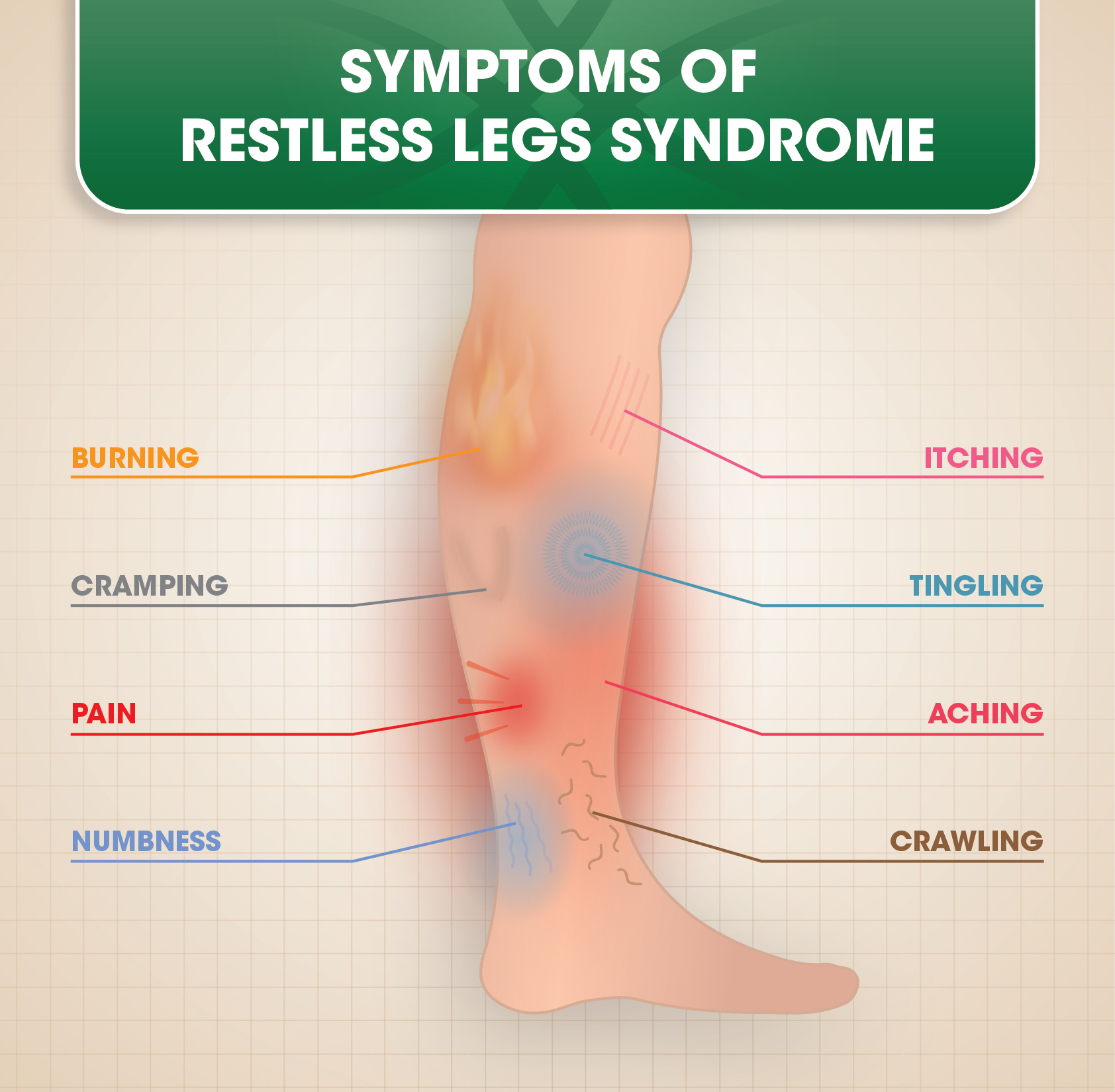Restless Legs Syndrome
Restless Legs Syndrome (RLS) is a common disorder with a known association with venous insufficiency. RLS is characterized by unpleasant or painful sensations in the legs and an urge to move the legs. Symptoms occur when the patient is relaxing, inactive or at rest, and can increase in severity during the night or latter part of the patient’s wake period. Moving the legs reduces and may relieve the discomfort. The discomfort and constant need to move the legs disturbs sleep and can lead to impairment of function in daily life. When RLS co-exists with venous insufficiency, treating the venous insufficiency can provide a substantial improvement in the patient’s symptoms and subsequently the patient’s quality of life.
Symptoms
- An urge or desire to move their legs, usually accompanied by uncomfortable sensations such as numbness, tingling, crawling, itching, aching, burning, cramping, or pain.
- The urge to move or uncomfortable sensations begin or worsen during periods of rest or inactivity, such as when sitting watching television or traveling in a car or by airplane.
- The urge to move or uncomfortable sensations are partially or totally relieved by activities such as stretching, walking, or exercising the affected muscles.
- The urge to move or uncomfortable sensations are worse or occur solely in the evening or at night.
- The urge to move or uncomfortable sensations are not solely due to another medical or behavioral problem (muscle pains, leg cramps, arthritis, habitual foot tapping).
Causes
RLS has been found to be a genetic syndrome in some cases, as parents with RLS can pass it down to their children. In addition, a variety of medical problems, as well as medications can contribute to the development of RLS.



